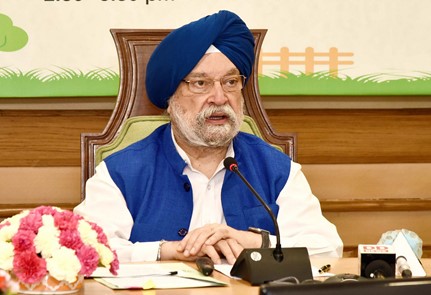
Public sector oil marketing companies (OMCs) have
saved about 509 crore litres of petrol on account of ethanol blending during the ethanol supply year 2022-23, besides
leading to an expeditious payment of about 19,300 crore to farmers.
It is estimated that a
net reduction of net carbon dioxide to the tune of 108 lakh metric tonnes was
seen during the period. Notably, as recently as last week, oil marketing
companies in the public sector announced an incentive of 6.87 per litre for the
production of ethanol from C-heavy molasses. The oil companies believe this incentive would maximise ethanol
production from the C molasses route and improve the overall availability of
ethanol for the ethanol blended petrol programme. C-molasses is a by-product
of sugar factories and its use for ethanol production is an effective way to
promote a green economy. India has already rolled out 20 per cent blended fuel,
though in a phased manner, in April 2023 and widespread availability is
expected in days to come. The government is ambitious of attaining 20 per cent
ethanol-blended petrol by 2024-25 and 30 per cent by 2029-30. The government
has advanced the target of E20 fuel from 2030 to 2025.
E20 blending in petrol was introduced by the Centre
to reduce the country’s oil import cost, energy security, lower carbon
emissions and better air quality…. Notably, at the COP26 summit in Glasgow in 2021, Prime Minister
Narendra Modi committed to an ambitious five-part ‘Panchamrit’ pledge,
including reaching 500 GW of non-fossil electricity capacity, generating half
of all energy requirements from renewables, and reducing emissions by 1 billion
metric tonnes by 2030.
India also aims to reduce the emissions intensity
of GDP by 45 per cent. Finally, India commits to net-zero emissions by 2070.